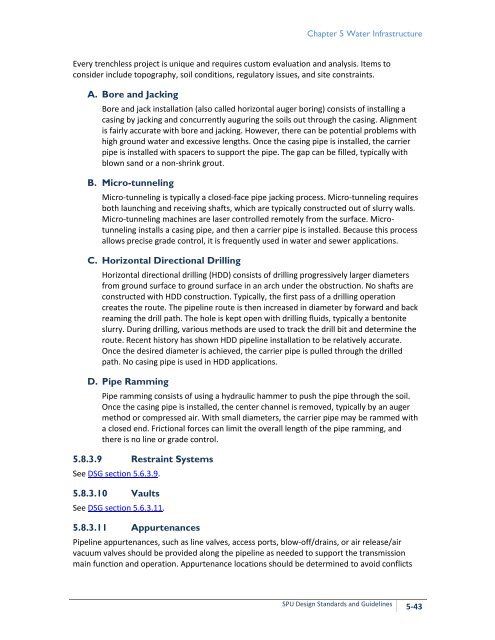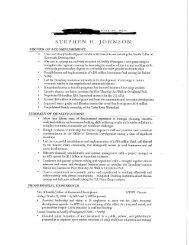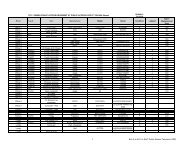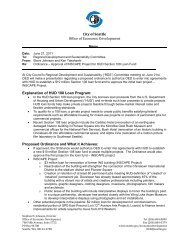2013 Water System Plan, Volume II - Seattle City Clerk's Office - City ...
2013 Water System Plan, Volume II - Seattle City Clerk's Office - City ...
2013 Water System Plan, Volume II - Seattle City Clerk's Office - City ...
Create successful ePaper yourself
Turn your PDF publications into a flip-book with our unique Google optimized e-Paper software.
Chapter 5 <strong>Water</strong> Infrastructure<br />
Every trenchless project is unique and requires custom evaluation and analysis. Items to<br />
consider include topography, soil conditions, regulatory issues, and site constraints.<br />
A. Bore and Jacking<br />
Bore and jack installation (also called horizontal auger boring) consists of installing a<br />
casing by jacking and concurrently auguring the soils out through the casing. Alignment<br />
is fairly accurate with bore and jacking. However, there can be potential problems with<br />
high ground water and excessive lengths. Once the casing pipe is installed, the carrier<br />
pipe is installed with spacers to support the pipe. The gap can be filled, typically with<br />
blown sand or a non-shrink grout.<br />
B. Micro-tunneling<br />
Micro-tunneling is typically a closed-face pipe jacking process. Micro-tunneling requires<br />
both launching and receiving shafts, which are typically constructed out of slurry walls.<br />
Micro-tunneling machines are laser controlled remotely from the surface. Microtunneling<br />
installs a casing pipe, and then a carrier pipe is installed. Because this process<br />
allows precise grade control, it is frequently used in water and sewer applications.<br />
C. Horizontal Directional Drilling<br />
Horizontal directional drilling (HDD) consists of drilling progressively larger diameters<br />
from ground surface to ground surface in an arch under the obstruction. No shafts are<br />
constructed with HDD construction. Typically, the first pass of a drilling operation<br />
creates the route. The pipeline route is then increased in diameter by forward and back<br />
reaming the drill path. The hole is kept open with drilling fluids, typically a bentonite<br />
slurry. During drilling, various methods are used to track the drill bit and determine the<br />
route. Recent history has shown HDD pipeline installation to be relatively accurate.<br />
Once the desired diameter is achieved, the carrier pipe is pulled through the drilled<br />
path. No casing pipe is used in HDD applications.<br />
D. Pipe Ramming<br />
Pipe ramming consists of using a hydraulic hammer to push the pipe through the soil.<br />
Once the casing pipe is installed, the center channel is removed, typically by an auger<br />
method or compressed air. With small diameters, the carrier pipe may be rammed with<br />
a closed end. Frictional forces can limit the overall length of the pipe ramming, and<br />
there is no line or grade control.<br />
5.8.3.9 Restraint <strong>System</strong>s<br />
See DSG section 5.6.3.9.<br />
5.8.3.10 Vaults<br />
See DSG section 5.6.3.11.<br />
5.8.3.11 Appurtenances<br />
Pipeline appurtenances, such as line valves, access ports, blow-off/drains, or air release/air<br />
vacuum valves should be provided along the pipeline as needed to support the transmission<br />
main function and operation. Appurtenance locations should be determined to avoid conflicts<br />
SPU Design Standards and Guidelines<br />
5-43
















